Top Ten Hunan Cultural Landmarks Announced
Cultural landmarks are a city¡¯s cultural identity. They are symbols of local history and culture. They represent the spiritual homeland for those who live here.
On November 8, the result of the Selection of Hunan Top Ten Cultural Landmarks in 2018 was announced.
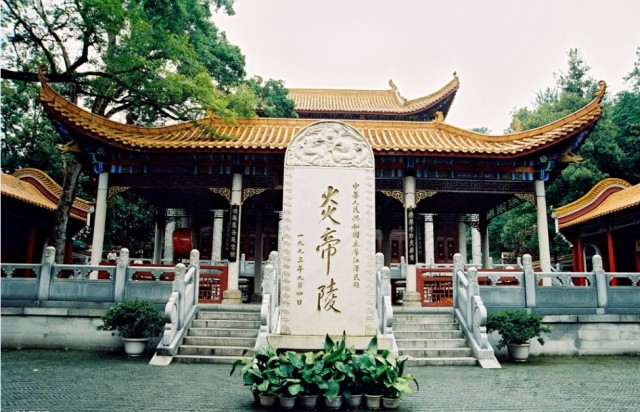
Travel tips£ºYou can get there by taking buses at Yanling Bus Stations.
2.Emperor Shun Mausoleum

Located in the northwestern part of Dong'an County, Emperor Shun Mausoleum acquired its present name from Emperor Shun who died during a hunting trip here. Emperor Shun, the founder of the Chinese moral culture and known for his filial piety, was a 23rd-22nd century BC leader of ancient China, among the Three Sovereigns and Five Emperors, whose half-century of rule was one of the longest in Chinese history. He was the designated throne successor to Emperor Yao, who set great store by Shun's moral integrity and unusual talent. (source: baike.sogou)
Travel tips£ºYou can get there by taking van at the parking lot of aquatic product market or Ningyuan Tourist Site Commuter Line.
3.Laosicheng Site-UNESCO¡¯s World Heritage
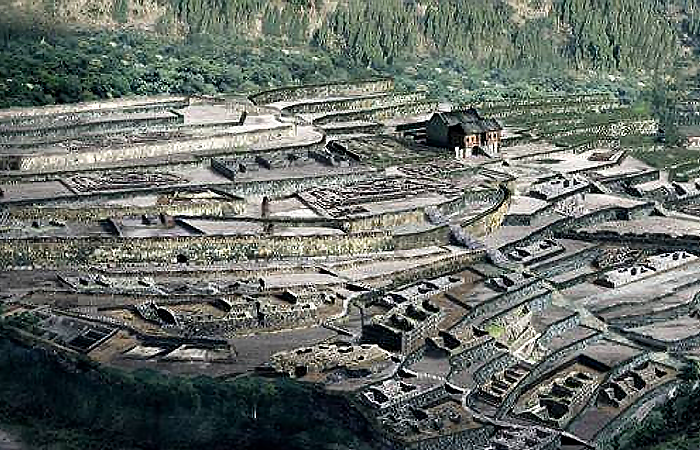
Located by the riverside of Lingxi River in the east of Yongshun County, Laosicheng was the Tusi Peng¡¯s administration area of Ancient Xizhou, and the political, economic, cultural and military center for southwestern ethnic minorities during Tusi Period from the 13th to the early 20th century. It lasted for 818 years going through the period of Song, Yuan, Ming, and Qing Dynasties with 28 royal houses and 35 feudal provincial or prefectural governors. The site of Laosicheng consists of three areas including residential area, government office and living quarters for chieftains, as well as eight streets.
Travel tips£ºYou can get there by taking Zhangjiajie-Yongshun Tourist Site Special Line, then take Yongshun-Laosicheng Commuter Line.
4.Yuelu Academy
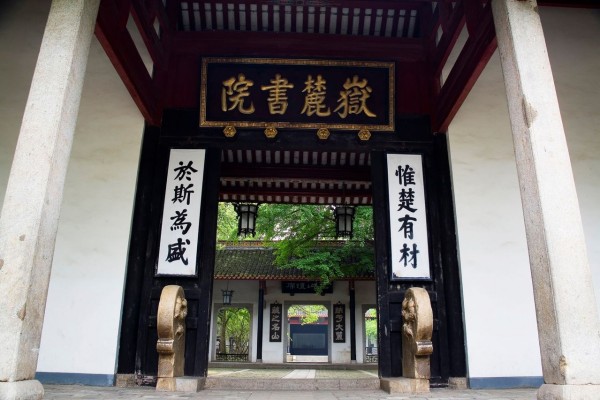
The words Yue Lu Shu Yuan (Yuelu Academy) on the horizontal board of the Main Gate were inscriptions of Zhenzong, an Emperor of the Song Dynasty (960AD-1279AD). From then on, Yuelu Academy became well-known all around the country and students came to study in an endless stream. On the door posts of the gate are couplets which read Wei Chu You Cai, Yu Si Wei Sheng (the Kingdom of Chu, the unique home of talents; the Academy of Yuelu, the very cradle of all). This couplet originates from Chinese classics and it is very appropriate given the fact that talents have been brought up continuously by the Academy since its establishment.
Travel tips£ºYou can get there by taking Changsha Buses NO.63, NO.106, No.132, No.202 or No.305; No1Tourist Site Passenger Line.
5.Yueyang Tower
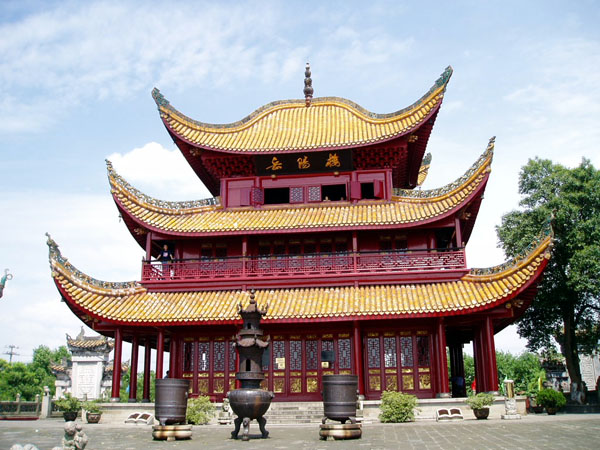
Standing on the bank of Dongting Lake in the northwest of Yueyang City, Yueyang Tower, along with the Yellow Crane Tower in Wuhan and the Prince Teng's Pavilion in Nanchang, is one of the three great towers in south of the Yangtze River. It used to be a watchtower for the soldiers garrisoning the city gate and taking a test. However, towards the end of the Eastern Han Dynasty, this tower was changed to an inspection tower to review troops by General Lu Su of the Wu Kingdom (222). Fan Zhongyan, a well-known writer, to compose an essay Records of the Yueyang Tower, which won the tower great fame home and abroad.
Travel tips£ºYou can get there by taking Yueyang Bus NO.6, NO.7, No.15, No.19, No.22, No. 25, NO.31, or NO.50.
6.Mao Zedong Boyhood Residence and Memorial Hall

Mao Zedong Boyhood Residence is located at Shangwu Ground, Tudi Chong, Shaoshan Village, Shaoshan Township. It lies on the south and faces north, and the building structure is like Chinese character "°¼". On the east, it belongs to Mao's family, while the other side of the house belongs to Mao's neighbor. The two families shared the central room. On Dec. 26, 1893, Mao Zedong was born in the house.
Travel tips£ºYou can get there by taking NO.1 or NO.2 Shaoshan Tourist Site Special Line; No.1, No.2 or No.3 Shaoshan Tourist Site Passenger Line; Shaoshan Tourist Site Commuter Line.
7.Liu Shaoqi Boyhood Residence and Memorial Hall

Travel tips£ºYou can get there by taking Changsha Bus NO. 312, NO. 314 to the West Bus Station in Changsha and take the Tourist Site Special Line or take Changsha-Ningxiang Bus and then take No. 901.
8.Zhijiang Surrender Memorial Hall
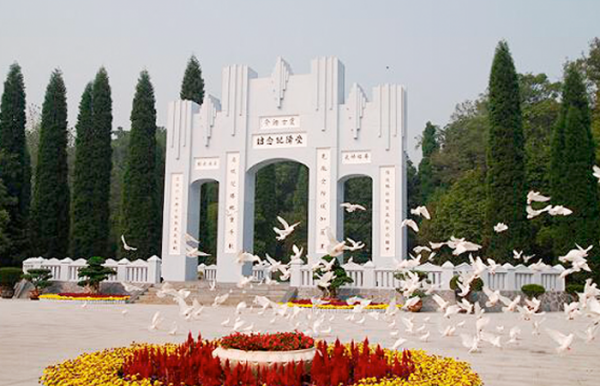
Located in Zhijiang County, Huaihua City, Zhijiang Surrender Memorial Hall was built in Feburary, 1946. It¡¯s a symbol of the victory of the Chinese People¡¯s War of Resistance Against Japanese Aggression and also the important testimony to the victory of the world anti-fascist war. From August 21st to September 8th, 1945, the Japanese Surrender Ceremony was held here. The tables, chairs and sofas in the indoor display are all original.
Travel tips£ºYou can get there by taking bus from the Huaihua West Bus Station.
9.Hunan Museum

Founded in early 1950s, Hunan Provincial Museum is located in Kaifu District of Changsha City, adjoining the Martyrs¡¯ Park and covering an area of 51,000 square meters. The museum boasts abundant collections that feature the cultural relics excavated from the world-famous Mawangdui Tombs of Han Dynasty, the bronze wares of the Shang and the Zhou Dynasties, cultural relics of Chu Dynasty, pottery and porcelain works from various dynasties, calligraphy works and paintings, and modern cultural relics, hence being listed as the largest historical and artistic museum in Hunan Province, as well as one of the eight National Foremost Museums to be co-constructed by central and local governments.
Travel Tips: You can get there by taking Bus No.3, No.113, No.112, No.131, No.136, No.146, No,150, No.358, No.203, No.901.
10.Changsha Binjiang Cultural Park

On November 8, the result of the Selection of Hunan Top Ten Cultural Landmarks in 2018 was announced.
1.Emperor Yan Mausoleum

According to legend, Emperor Yan "invented" spade-shaped plough, taught his people how to do farm work, tasted various herbs, made medicines, wove hempen cloth and set up markets. He continued to serve his people by treating their diseases and, unfortunately, died from tasting poisonous herbs in Ling County. Admiring his merits and virtues, his posterity built the Ancestral Temple to Emperor Yan at his burial mound in 967.Now it has been a sacred place where the Chinese people pay homage to their ancestor.
Travel tips£ºYou can get there by taking buses at Yanling Bus Stations.
2.Emperor Shun Mausoleum

Located in the northwestern part of Dong'an County, Emperor Shun Mausoleum acquired its present name from Emperor Shun who died during a hunting trip here. Emperor Shun, the founder of the Chinese moral culture and known for his filial piety, was a 23rd-22nd century BC leader of ancient China, among the Three Sovereigns and Five Emperors, whose half-century of rule was one of the longest in Chinese history. He was the designated throne successor to Emperor Yao, who set great store by Shun's moral integrity and unusual talent. (source: baike.sogou)
Travel tips£ºYou can get there by taking van at the parking lot of aquatic product market or Ningyuan Tourist Site Commuter Line.
3.Laosicheng Site-UNESCO¡¯s World Heritage

Located by the riverside of Lingxi River in the east of Yongshun County, Laosicheng was the Tusi Peng¡¯s administration area of Ancient Xizhou, and the political, economic, cultural and military center for southwestern ethnic minorities during Tusi Period from the 13th to the early 20th century. It lasted for 818 years going through the period of Song, Yuan, Ming, and Qing Dynasties with 28 royal houses and 35 feudal provincial or prefectural governors. The site of Laosicheng consists of three areas including residential area, government office and living quarters for chieftains, as well as eight streets.
Travel tips£ºYou can get there by taking Zhangjiajie-Yongshun Tourist Site Special Line, then take Yongshun-Laosicheng Commuter Line.
4.Yuelu Academy

The words Yue Lu Shu Yuan (Yuelu Academy) on the horizontal board of the Main Gate were inscriptions of Zhenzong, an Emperor of the Song Dynasty (960AD-1279AD). From then on, Yuelu Academy became well-known all around the country and students came to study in an endless stream. On the door posts of the gate are couplets which read Wei Chu You Cai, Yu Si Wei Sheng (the Kingdom of Chu, the unique home of talents; the Academy of Yuelu, the very cradle of all). This couplet originates from Chinese classics and it is very appropriate given the fact that talents have been brought up continuously by the Academy since its establishment.
Travel tips£ºYou can get there by taking Changsha Buses NO.63, NO.106, No.132, No.202 or No.305; No1Tourist Site Passenger Line.
5.Yueyang Tower

Standing on the bank of Dongting Lake in the northwest of Yueyang City, Yueyang Tower, along with the Yellow Crane Tower in Wuhan and the Prince Teng's Pavilion in Nanchang, is one of the three great towers in south of the Yangtze River. It used to be a watchtower for the soldiers garrisoning the city gate and taking a test. However, towards the end of the Eastern Han Dynasty, this tower was changed to an inspection tower to review troops by General Lu Su of the Wu Kingdom (222). Fan Zhongyan, a well-known writer, to compose an essay Records of the Yueyang Tower, which won the tower great fame home and abroad.
Travel tips£ºYou can get there by taking Yueyang Bus NO.6, NO.7, No.15, No.19, No.22, No. 25, NO.31, or NO.50.
6.Mao Zedong Boyhood Residence and Memorial Hall

Mao Zedong Boyhood Residence is located at Shangwu Ground, Tudi Chong, Shaoshan Village, Shaoshan Township. It lies on the south and faces north, and the building structure is like Chinese character "°¼". On the east, it belongs to Mao's family, while the other side of the house belongs to Mao's neighbor. The two families shared the central room. On Dec. 26, 1893, Mao Zedong was born in the house.
Travel tips£ºYou can get there by taking NO.1 or NO.2 Shaoshan Tourist Site Special Line; No.1, No.2 or No.3 Shaoshan Tourist Site Passenger Line; Shaoshan Tourist Site Commuter Line.
7.Liu Shaoqi Boyhood Residence and Memorial Hall

Liu Shaoqi Boyhood Residence is located in Huaminglou, Ningxiang County, Hunan Province, China. It is a courtyard house where Liu Shaoqi was born and spent his childhood and adolescence. The former residence has now become a national key cultural relics protection unit.
Travel tips£ºYou can get there by taking Changsha Bus NO. 312, NO. 314 to the West Bus Station in Changsha and take the Tourist Site Special Line or take Changsha-Ningxiang Bus and then take No. 901.
8.Zhijiang Surrender Memorial Hall

Located in Zhijiang County, Huaihua City, Zhijiang Surrender Memorial Hall was built in Feburary, 1946. It¡¯s a symbol of the victory of the Chinese People¡¯s War of Resistance Against Japanese Aggression and also the important testimony to the victory of the world anti-fascist war. From August 21st to September 8th, 1945, the Japanese Surrender Ceremony was held here. The tables, chairs and sofas in the indoor display are all original.
Travel tips£ºYou can get there by taking bus from the Huaihua West Bus Station.
9.Hunan Museum

Founded in early 1950s, Hunan Provincial Museum is located in Kaifu District of Changsha City, adjoining the Martyrs¡¯ Park and covering an area of 51,000 square meters. The museum boasts abundant collections that feature the cultural relics excavated from the world-famous Mawangdui Tombs of Han Dynasty, the bronze wares of the Shang and the Zhou Dynasties, cultural relics of Chu Dynasty, pottery and porcelain works from various dynasties, calligraphy works and paintings, and modern cultural relics, hence being listed as the largest historical and artistic museum in Hunan Province, as well as one of the eight National Foremost Museums to be co-constructed by central and local governments.
Travel Tips: You can get there by taking Bus No.3, No.113, No.112, No.131, No.136, No.146, No,150, No.358, No.203, No.901.
10.Changsha Binjiang Cultural Park

Changsha Binjiang Cultural Park is located in Changsha New River Delta. The park possesses ¡°Three Museums and One Hall¡± buildings (Changsha Museum, Changsha City Planning Exhibition Museum, Changsha Library, Changsha Concert Hall), together with the landscape tower and surrounding facilities.
Travel Tips: You can get there by taking the Bus No.520, No.804, No.357 or Subway Line One.
The selection was organized by the CPC Hunan Provincial Committee Publicity Department, Cyberspace Administration of the CPC Hunan Provincial Committee, andthe Hunan Provincial Department of Culture and Tourism.
The 10-month-long selection process attracted much local, national, and international attention. There were more than 8 million online votes. The event helps enhance Huxiang cultural influence and popularity.
Travel Tips: You can get there by taking the Bus No.520, No.804, No.357 or Subway Line One.
The selection was organized by the CPC Hunan Provincial Committee Publicity Department, Cyberspace Administration of the CPC Hunan Provincial Committee, andthe Hunan Provincial Department of Culture and Tourism.
The 10-month-long selection process attracted much local, national, and international attention. There were more than 8 million online votes. The event helps enhance Huxiang cultural influence and popularity.
Chinese source: hn.xinhuanet.com; Hunan Daily; hnswht.gov.cn
Photo source: hunan.gov.cn; youngzhou.gov.cn; hnswht.gov.cn